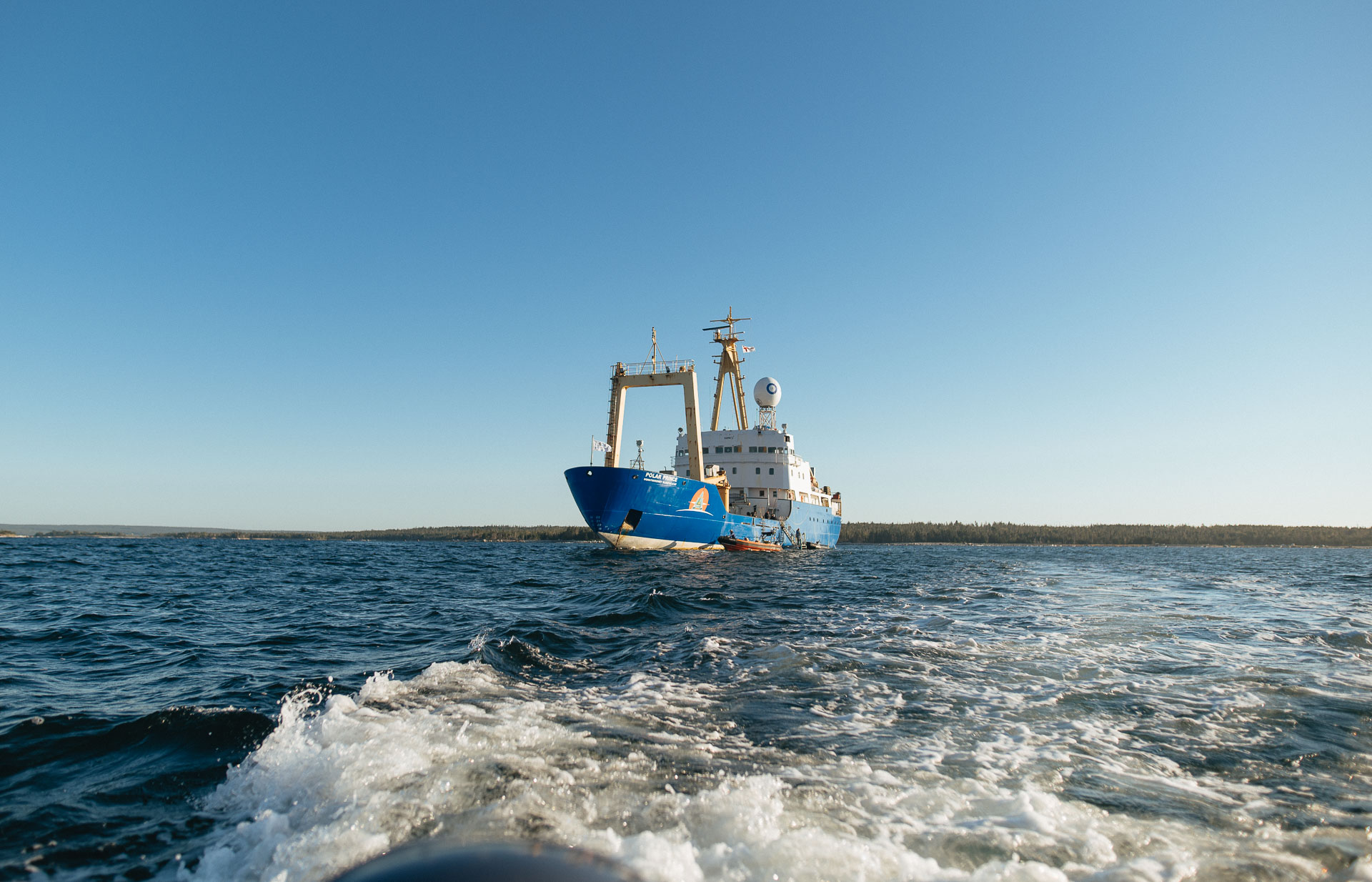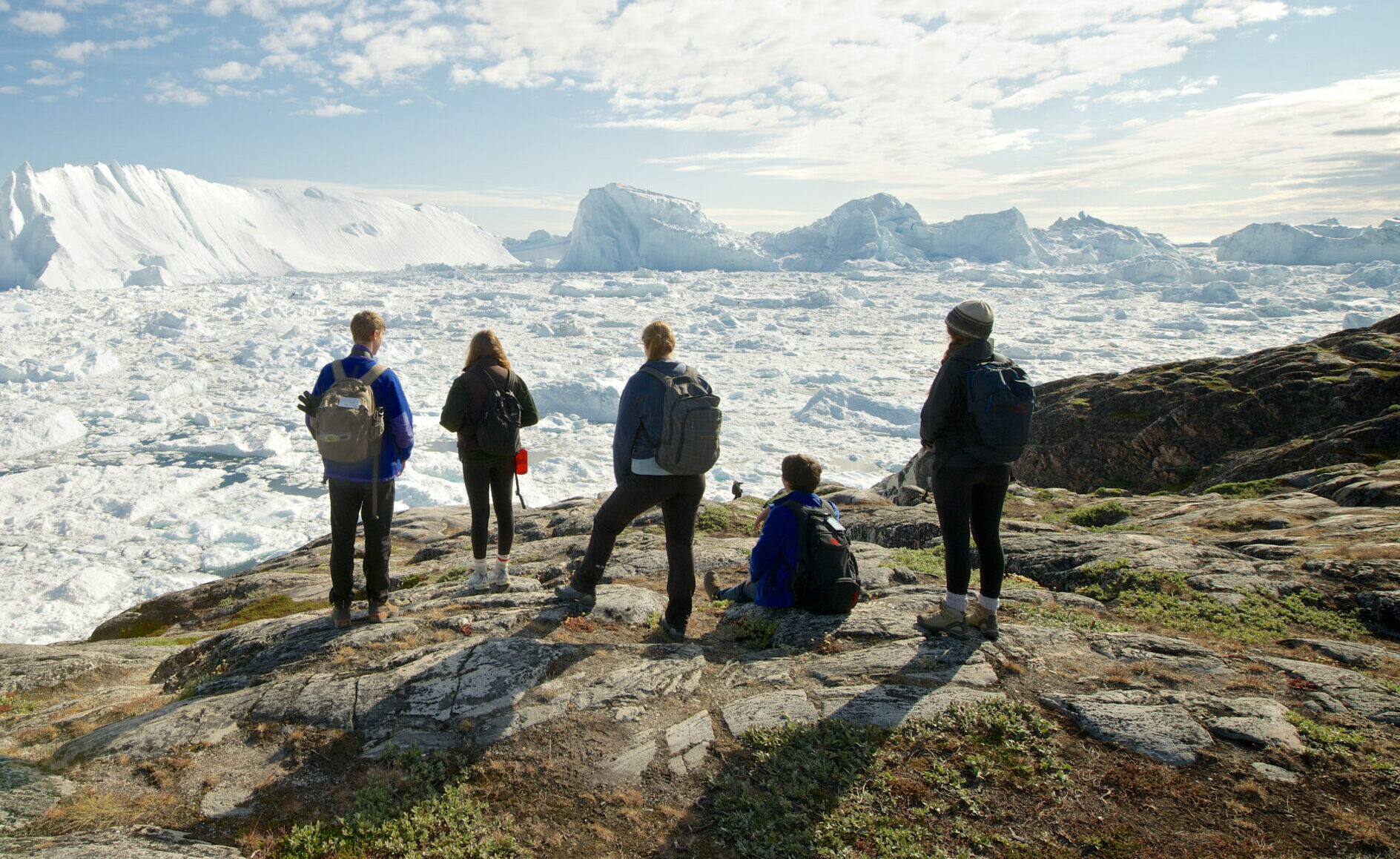Ocean Conservation Expedition: September 24-26
It’s official. We’ve crowned the Kelp Queen of the Polar Prince. Without question, it’s Brogan Regier. A marine biology undergrad from Dalhousie University, she joined the expedition on September 21 and spent every day collecting underwater video footage to determine where kelp is growing along Nova Scotia’s Atlantic coast, and predict where it will move with climate change.
Kelp is a very important plant! In addition to providing oxygen for the planet, it serves as a vital habitat for lots of different marine species, a nursery ground for many commercially important fish, and provides protection for many small organisms. But, kelp is in decline due to climate-driven temperature changes.
“That’s why it’s such an important place for research because it’s a hot spot for warming, as a result, it’s experiencing decreases in kelp that are way faster than anywhere else,” Brogan Regier.
While she had found plenty of kelp to confirm and populate her model, on Monday she struck oceanic gold on Pearl Island. It’s an important area for sea birds and one that Fisheries and Oceans Canada is looking at making it a marine protected area for that reason. But the department is also considering expanding the protected area to encompass any kelp beds, given how important they are to the ecosystem. Brogan needed to show that the kelp was there.

When we initially arrived, the ocean conditions didn’t look favourable. Eventually, we put a zodiac in the water to take Brogan and other members of the science team ashore. They had to scale a pilot ladder down the side of the Polar Prince to reach it, as the four-foot swells kept our usual launch out of the water. But thanks to a coordinated effort by our expedition team and the ship’s wonderful crew, the science team was able to land on Pearl Island.
“It was extremely rocky and the waves were insane but once we got there, all I could see was kelp. The island was covered in kelp and I was so excited I thought I was going to cry,” Brogan says.
Overwhelmed by what she found, she had to lay down in it.

There’s more to Pearl Island than kelp, however. According to Karel Allard of the Canadian Wildlife Service, “Pearl Island packs a punch” because it’s so well-suited to hosting bird life and has a broad diversity of nesting bird species. “There are few islands of this size that are this far offshore. That makes it difficult for most mammalian predators to get on the island,” he says.
Earlier in the day, we visited beautiful Cape Le Have where we explored grassy channels in the zodiacs while our science and dive teams collected data and samples.
Karel says Cape La Have is a “crown jewel” because there are so few islands like it – large, undeveloped and relatively accessible to the mainland. No surprise, that’s led to pressure to develop it. However, the Municipality of Lunenburg entered into an agreement with the Nova Scotia Nature Trust to put an easement in place to protect it. Karel thinks it’s “pretty significant” that it’s been set aside for nature and put in trust for future generations.
“All of these sites are special,” he says. “They all play a part in building and contributing to a functioning network of protected areas. Connected, they all contribute to that network.”
The day saw us run the weather gamut, waking to thunderstorms and heaving downpours, fog with peeks of sun, with some waves and swell thrown in for good measure. It was definitely the most challenging weather day of the expedition. In contrast, on Sunday, when we visited Kejimkujik National Park Seaside it had been all blue skies and sunshine. It’s a magical place with stunning white beaches and shimmering turquoise waters. You could be forgiven for thinking you were in the Caribbean while visiting – although the slightly cooler water temperatures will cure you of that notion. That didn’t stop members of the expedition from diving in, however.

While there, we learned about how Parks Canada is working to adapt coastal parks like Keji to climate change. That includes climate-smart coastal trail systems and exploring adding small portions to the land that surrounds the park as a climate buffer to increase habitat for the species that call it home as conditions change in this area. We also had a short but sweet day-long visit from Craig Stewart, who co-chairs the Disaster Resilience and Security Advisory Table along with Public Safety Canada. It’s one of five advisory tables providing input to the federal government as it works to create a National Adaptation Strategy to climate change, which is set for release this fall. “Our task has been to come up with a game plan to address escalating disasters emanating from climate change,” he told us during a presentation.
His talk was timely as Hurricane Fiona had just moved through Atlantic Canada, leaving a path of devastation in its wake. Whether it’s wildfires, heatwaves, droughts, flooding or massive storms, Craig says it is a certainty that we will only continue to see more of this.
“It’s a pattern that’s going to continue into the future. We can’t think of these any longer as one-off events. We need to be prepared and we need to start thinking systemically about how we’re going to be prepared.” – Craig Stewart
Our journey aboard the good ship Polar Prince is taking us to the 100 Wild Islands next. Stay tuned, as no doubt more adventure will follow.
To view our expedition page click here.
To view the photo gallery from September 24-26 click here.





